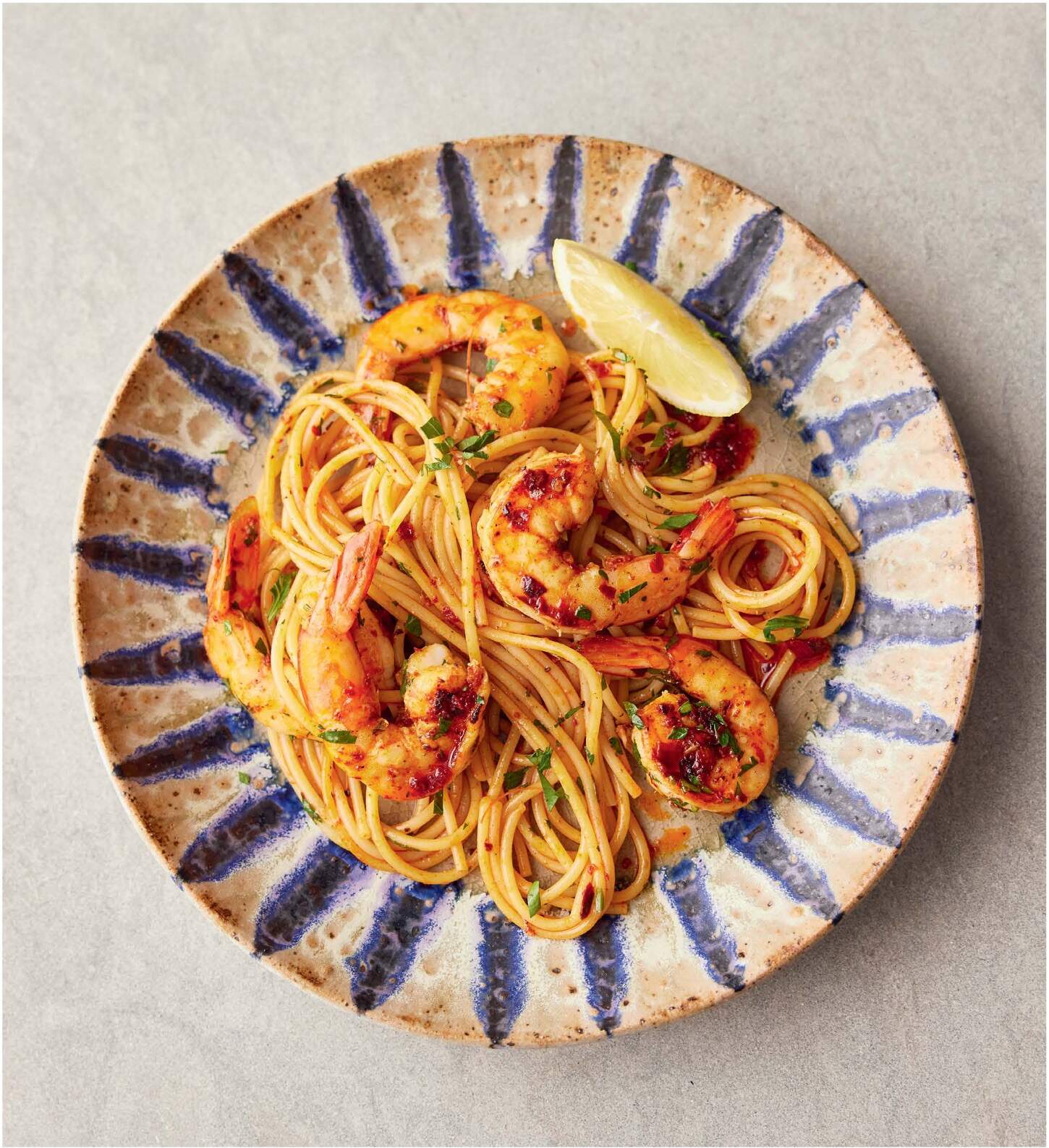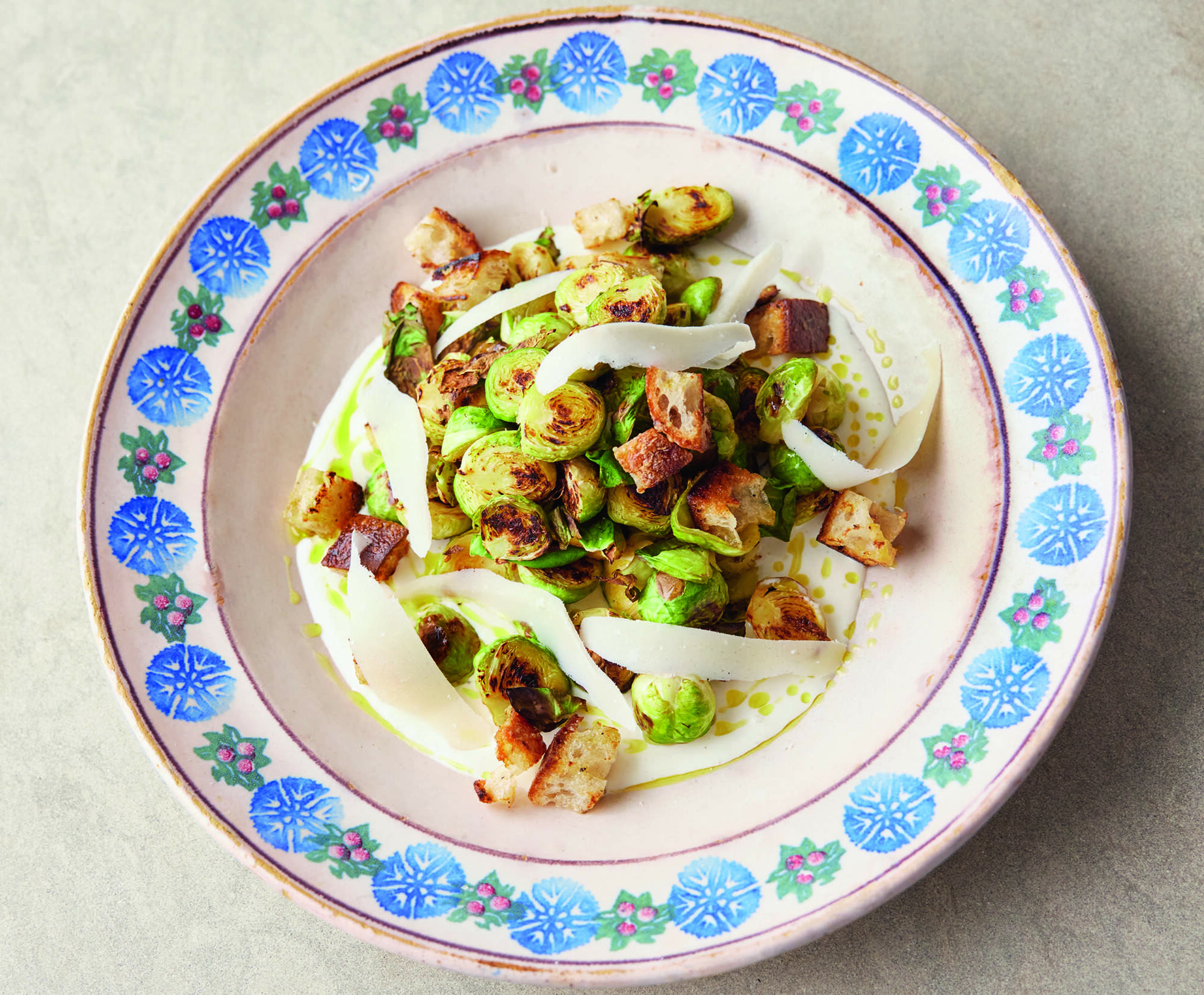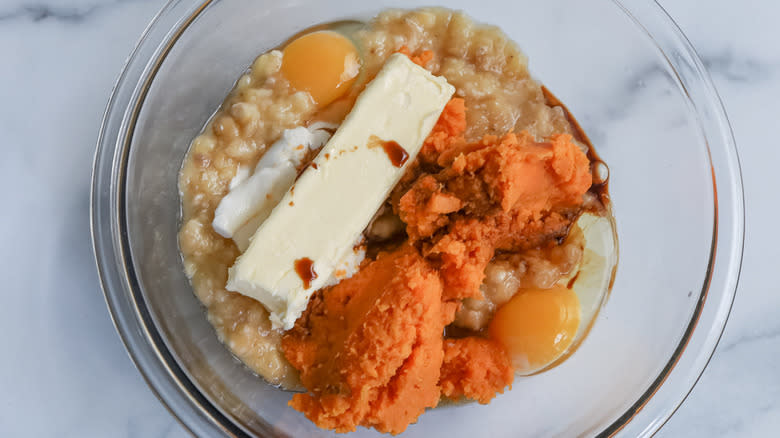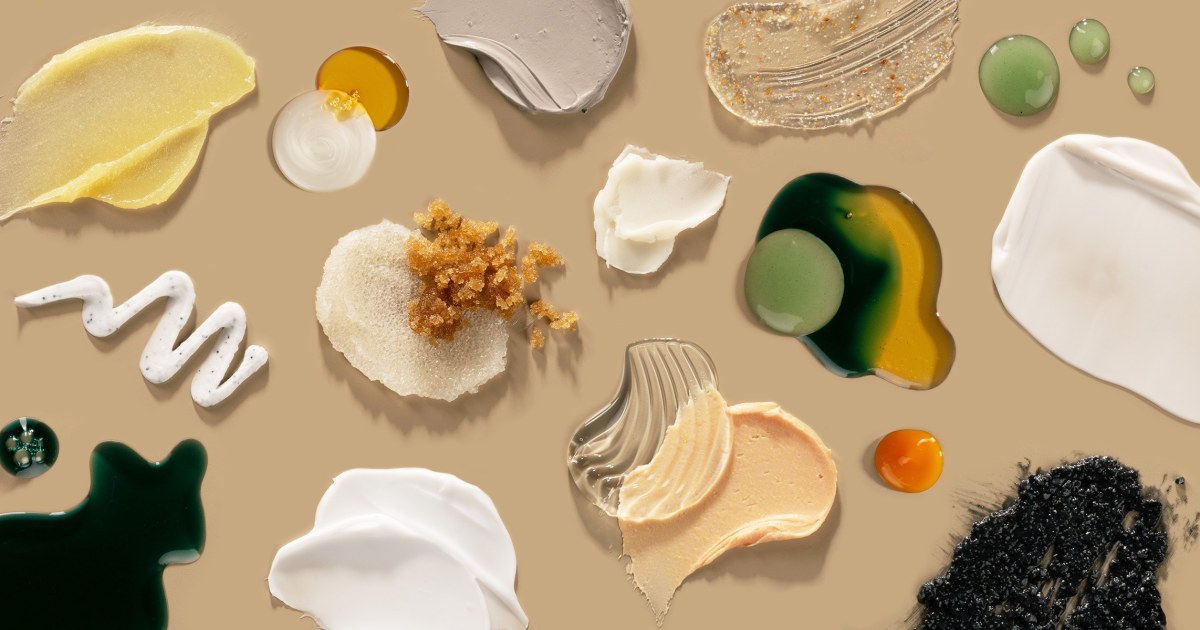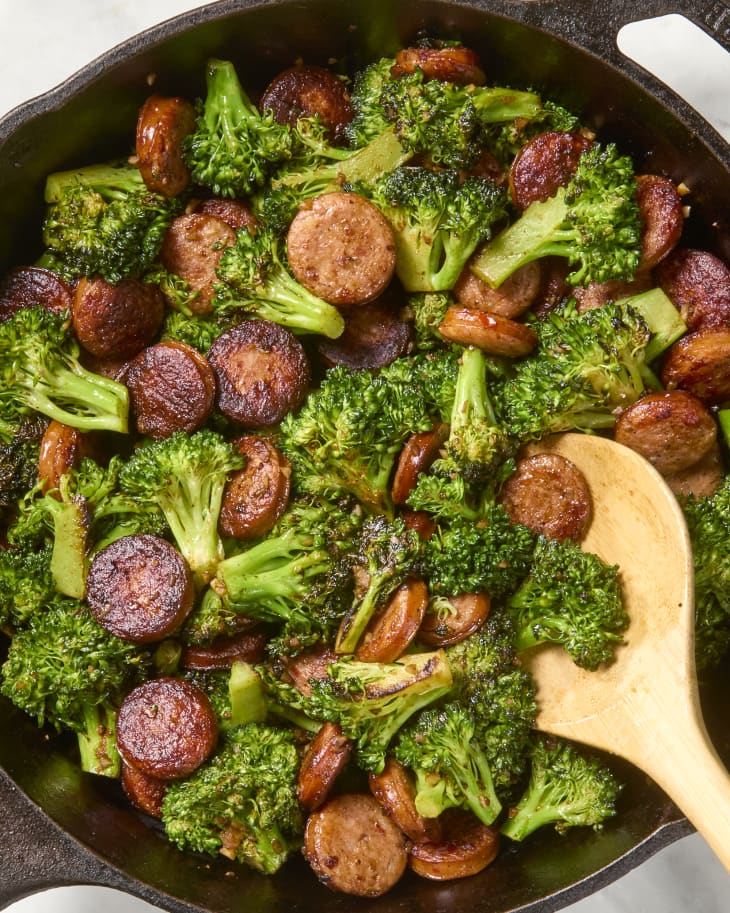Visit our Dry (Skin) January homepage for more dry skin essentials.
Whether you’re a skin care pro or a curious beginner, you’ve probably scanned the ingredients list of your favorite creams, cleansers and sheet masks wondering what it all means — and what it can do for your skin. Or, perhaps, you’ve stumbled upon a new “It” ingredient on social media and wondered if it’s worth the money.]
To help you navigate the world of complex skin care terms, we created a glossary of ingredients we think you should know about, guided by board-certified dermatologists and our extensive past coverage. Bookmark this page: For now, we’re focusing on ingredients most beneficial to dry skin during the colder months, but we’ll be updating this throughout the year with more tried-and-true skin care terms.
Browse below to learn more about what each ingredient does and how to incorporate it into your daily routine.
Aloe vera is a natural moisturizer and anti-inflammatory, typically found within creams, gels and sometimes serums. It has also been found to decrease the effects of sunburns, improve wound healing and decrease acne blemishes.
Best for: Sunburns, minor burns and superficial wounds like scrapes or cuts.
How to use it: Aloe is unnecessary to incorporate into your daily skin care routine unless you have a specific reason to.
Proceed with caution if: it’s combined with ingredients that may irritate your skin (though topical aloe vera is generally well-tolerated on its own).
Ceramides are one of the three key lipids in our skin (in addition to cholesterol and free fatty acids). Simply put, ceramides are the glue that holds our skin cells together. They provide a tough water-impermeable outer barrier, avoiding water loss and helping to keep the skin barrier intact. Ceramides are bio-identical to what the skin naturally produces.
Best for: all skin types because they are naturally occurring in the skin.
How to use it: Ceramides are typically found in moisturizers, skin barrier creams and cleansers and are almost identical to the naturally-occurring ones in your skin. So, you can use a ceramide-containing product daily, both morning and night.
Proceed with caution if: you are allergic to other common ingredients found in ceramide-containing products. However, because ceramides are naturally occuring, there is rarely an intolerance, even in the most sensitive skin.
Derm tip: Ceramides are most effective when applied while the skin is slightly damp (particularly after bathing or washing hands).
Emollients are ingredients in moisturizers that soothe, soften and lubricate the skin. Typically thicker than humectants, emollients help form a protective barrier, lock in moisture and prevent water loss. Common emollients are squalene/squalane, lipids (triglycerides), shea butter, colloidal oatmeal and cocoa butter.
Best for: those with dry skin, a damaged skin barrier or fine lines and wrinkles, though anyone can benefit from using an emollient in their routine.
How to use it: Typically found in cream, balms, ointments and lotions, you can use emollients daily, both day and night.
Proceed with caution if: you have acne-prone skin because some emollients are occlusive, meaning they might clog pores.
Glycerin strengthens the skin barrier and acts as a natural humectant, drawing moisture from the air into the skin. Primarily, the ingredient helps moisturize and heal dry skin.
Best for: dry skin, but well-tolerated by all skin types and doesn’t typically cause skin sensitivities.
How to use it: Chances are, you’re already applying at least one product that has glycerin in it. Typically found in lotion, serums and even hair care products, as well as pure glycerin in the form of tablets, you can use glycerin both morning and night on the face, hands and body.
Proceed with caution if: you’re acne-prone because some glycerin-containing products may have oils or other irritating ingredients.
Derm tip: Glycerin pulls water from the environment to your skin, so it works great to add a humidifier to your room, especially during the winter or if you live in a drier climate.
Humectants are a common skin ingredient category that attracts moisture from the air into the top layers of the skin. Simply put, humectants attract water.
Best for: dry skin, though any skin type can benefit from a humectant.
How to use it: Typically found in moisturizers, serums and lotions, you can use humectants day and night. Common humectants include hyaluronic acid, glycerin, urea and linoleic acid.
Proceed with caution if: you live in a dry environment and have dehydrated skin, as humectants may draw moisture from the skin instead of the air.
Hyaluronic acid is a naturally occurring chemical your body produces (in our skin, eyes, joints and connective tissue). It’s a humectant, which means it attracts moisture from the air into the skin and keeps your skin moisturized and hydrated. It can also minimize the appearance of fine lines and wrinkles.
Best for: all skin types, dehydrated skin.
How to use it: You can apply low concentrations of hyaluronic acid — typically anywhere from 1% to 2% in creams, ointments, serums and lotions — directly on the skin at any time, once or twice a day.
Proceed with caution if: you have very sensitive skin because high concentrations can cause irritation and inflammation.
Derm tip: Hyaluronic acid is compatible with other active ingredients, including retinol, benzoyl peroxide and alpha hydroxy acids (AHAs), and can prevent your skin from drying out or getting irritated.
Niacinamide is a type of vitamin B3 that hydrates the skin by preventing water loss and regulating oil production. It helps to support the skin barrier by building keratin (a protein that maintains skin health), easing inflammation and redness associated with skin conditions like acne, rosacea and eczema, and managing hyperpigmentation.
Best for: all skin types, especially dry skin that needs help retaining moisture, sensitive or inflamed skin, or oily skin with excess sebum and oil production.
How to use it: Most commonly found in serums and moisturizers, you can apply it morning and night to the entire face. You can pair it with most common active ingredients, including retinol, peptides, hyaluronic acid, hydroxy acids (AHA and BHA), growth factors and peptides.
Proceed with caution if: you are allergic to other common ingredients found in moisturizers and serums that may cause redness or irritation. However, there is rarely an intolerance to niacinamide, even in the most sensitive skin.
Derm tip: It often comes in one of two strengths: 2% or 5%. Start at a lower percentage if your skin is sensitive, and build up to 5% strength if you can tolerate it to get the best results.
Occlusives create a protective layer on top of the skin to prevent water loss, which helps prevent irritants and allergens from entering the skin. Some of the most common occlusives include petrolatum, lanolin, mineral oil, beeswax and dimethicone.
Best for: those with dry skin, though anyone can benefit from using occlusives in their routine.
How to use it: You’ll commonly see occlusive ingredients in the moisturizer step of your daytime and nighttime skin care routine, alongside humectants like hyaluronic acid and emollients like squalane.
Proceed with caution if: you have acne-prone skin because some occlusives can clog pores, potentially causing breakouts. (Ensure your occlusive product is noncomedogenic, making it less likely to clog pores.)
Retinoids are a class of chemicals derived from vitamin A. Topical retinoids also have potent anti-inflammatory effects (which help improve acne) and reduce hyperpigmentation by stimulating cell turnover. They also help stimulate the production of new collagen and elastin, thickening the skin and resulting in less noticeable fine lines and wrinkles over time.
Best for: those with acne, fine lines and wrinkles, collagen loss and hyperpigmentation.
How to use it: You can use a retinoid every evening (at most) on clean, dry skin, but the frequency for most skin types should begin at 1-2 nights per week, working up gradually to nightly if tolerated. Popular retinoids like tretinoin and tazarotene are available by prescription only, while adapalene is an acne treatment available over the counter.
Proceed with caution if: you have sensitive skin because it can be highly irritating. If you accidentally overdo a retinoid or use it incorrectly, you’ll often notice retinoid dermatitis, or sudden and unpleasant redness, burning, flaking and/or itching.
Derm tip: To avoid irritation, use the “sandwich method” by applying your retinoid after a light moisturizer and before a heavier cream, which might dilute the effects but help your skin adapt to the product faster.
Retinol is a natural derivative of vitamin A and a type of retinoid available in weaker over-the-counter formulas. Retinol stimulates the production of collagen and decreases the enzymes responsible for the breakdown of collagen. It also slows the transfer of melanin to keratinocytes (skin cells that produce keratin), which helps reduce hyperpigmentation.
Best for: those with fine lines and wrinkles, collagen loss and hyperpigmentation.
How to use it: Retinol is typically found in serums, creams and moisturizers. Apply to clean, dry skin at night before your moisturizer. However, like retinoids, slowly introduce the ingredient into your skin care routine to avoid irritation.
Proceed with caution if: you have sensitive skin because it can be irritating.
Derm tip: Look for a retinol that combines ingredients like niacinamide, hyaluronic acid, glycerin and ceramides, which can be helpful at mitigating irritation, especially for first-time retinol users.
Squalane is derived directly from plants or made by adding hydrogen to squalene, an oily substance our bodies produce to moisturize the skin (it also has a longer shelf-life than squalene). Most squalane in skin care is sourced from olive trees, sugar cane and rice bran. It acts as an emollient, preventing water from evaporating off the skin’s surface.
Best for: all skin types, especially dry, sensitive skin. Though technically an oil, it doesn’t feel oily and is compatible with acne-prone skin.
How to use it: Typically found in creams, ointments, serums and lotions, squalane works well with other ingredients, and you can combine it with your retinol or retinoid to prevent irritation. You can apply this ingredient every morning (before SPF) and night (if combined with a retinol or retinoid, use in the evening).
Proceed with caution if: you have acne-prone skin because squalene (with an “e”) may clog pores. When it comes to squalane (with an “a”), however, there’s no need to worry — it is generally very well tolerated with a low risk of irritation.
Derm tip: Squalane-containing products are especially effective on clean, slightly damp skin to help lock in moisture.
Vitamin E is an antioxidant and anti-inflammatory ingredient, so it soothes irritated skin and protects it from stressors like UV rays and pollution. It’s most commonly found in moisturizers, serums and oils, and it’s usually combined with other antioxidants like vitamin C.
Best for: those with dry skin and/or prone to free radical damage.
How to use it: Apply in the morning after cleansing your skin. Experts recommend combining vitamin E with potent antioxidants like vitamin C to protect against free radicals and UV rays.
Proceed with caution if: you have very oily skin because it tends to be a heavier oil, so you may only be able to apply it a few times a week. Vitamin E has a very low risk of irritation.
Meet our experts
At NBC Select, we work with experts with specialized knowledge and authority based on relevant training and/or experience. We also ensure all expert advice and recommendations are made independently and without undisclosed financial conflicts of interest.
- Dr. Apple Bodemer is a board-certified dermatologist and associate professor of dermatology at the University of Wisconsin School of Medicine and Public Health.
- Dr. Jeanine Downie is a board-certified dermatologist with Image Dermatology in Montclair, New Jersey. Her research areas include photoaging, skin cancer, cosmeceuticals and injectables, cosmetic dermatology, skin of color and sun protection.
- Dr. Gabriela Soza is a board-certified cosmetic dermatologist at Wexler Dermatology in New York City.
- Dr. Rachel Westbay is a board-certified dermatologist at Marmur Medical in New York City.
Why trust NBC Select?
Mili Godio is an updates editor at NBC Select who has extensively covered skin care and wellness for the past three years. For this glossary, she spoke with four dermatologists to define each term and learn more about the benefits, limitations and uses of each ingredient.
Catch up on NBC Select’s in-depth coverage of personal finance, tech and tools, wellness and more, and follow us on Facebook, Instagram, Twitter and TikTok to stay up to date.
Adblock test (Why?)
Skin care glossary: All the ingredients you need to know - NBC News
Read More

